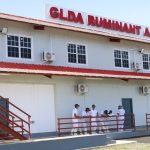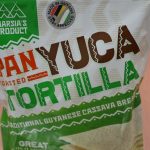The Civil Defence Commission (CDC) is leading efforts to bring some level of relief to communities hard hit by drought-like conditions due to El Nino.
The agency’s Director General, Col. Rt. Chabilall Ramsarup informed the Government Information Agency (GINA) that since being given the mandate by President David Granger to oversee relief efforts, he has been chairing El Nino Committee meetings every Wednesday to address how the affected communities can be supported. He stated, “We look at what resources are available and how best we can apply those resources… to satisfy mainly the agricultural areas.”
In terms of agriculture, Col Ramsarup said that initially it was feared that the rice crop would suffer badly with current drought conditions, “Now that we are coming down to the end, it looks like we will save a lot of rice. We anticipated that we might have run short with supplying rice for the local market, but now all of the acreages have been planted at the right time.” He added that there is still some uncertainty about the quality of rice that will be harvested with full or even cracked grains being possible as a result of the hot conditions.
The Guyana Sugar Corporation (GuySuCo) is trying to manage as best as it could, but the heat has led to reduced cultivation. The CDC head noted that the hot conditions have also resulted in cane growth being stunted by as many as two feet. This will affect the overall production, he explained.
Region Nine, Upper Takutu, Upper Essequibo, the hardest hit area, has seen most of its regular water sources such as artesian wells, creek and small rivers run dry. Only the major rivers such as the Takutu and Ireng, the CDC head stated, have water. He said, “We have sent in 35 tanks, 450- gallon tanks into the regions. They have been distributed into the sub-regions. We have sent in 15 water pumps and what they are doing is putting two and three tanks on a trailer, using the water pumps and filling the tanks from available water sources, and tractor trailering them into the sub-regions and satellite communities.”
Water purification tablets are also being distributed, but many residents have not been using these, causing some concern, Ramsarup said. He added that fortunately there have been no serious cases of diseases, but efforts are ongoing to encourage more residents use the preventative tablets.
There are efforts being made to source, with assistance from the Guyana Water Incorporated (GWI), and the Ministry of Indigenous Peoples’ Affairs, a drilling rig to dig deeper wells in Region Nine. The agency is also looking at digging canals and reservoirs. Col. Ramsarup cited the example of the Santa Fe Mega Farm in the region which has its own water supply via a reservoir. “They dug a huge lake and they are still using water to irrigate their crops and their livestock”.
Assistance has also been sought from USAID and the Caribbean Development Bank as the drought-like conditions are projected to be cyclical. “We need to put some money into there to develop the infrastructure, and we don’t want the people to suffering,” Ramsarup stated. Along the coast, the well at the Diamond Community is also down and interventions are being made in that community to bring relief to residents.
With only Regions Seven, Eight and Ten so far unaffected, the top CDC official said that the agency has been working with Agriculture, Communities and Indigenous Peoples Affairs’ Ministries, GuySuCo, the Guyana Rice Development Board (GRDB), National Agriculture Research and Extension Institute (NAREI), National Drainage and Irrigation Authority (NDIA), and GWI.
El Nino weather pattern which has led to extremely dry conditions across Guyana and some parts of South America is expected to end sometime in May or April.





